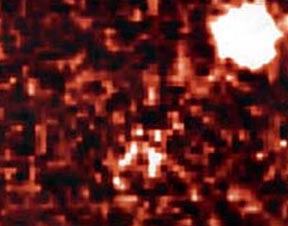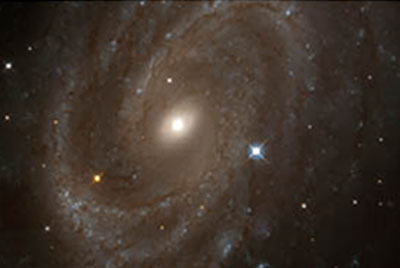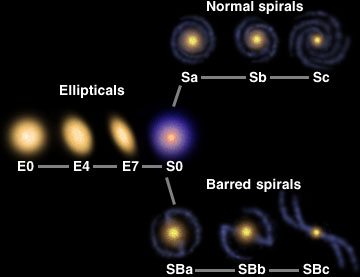Click on image for full size
Courtesy of Livermore National Lab
Related links:
Scientists Find One of the First Galaxies
News story originally written on June 21, 1999
Scientists found an ancient galaxy that may be one of the first ever! The galaxy is hidden inside an enormous black hole. This black hole is estimated at 100 million times the mass of our Sun. The galaxy is approximately 11 billion years old. Recently, scientists revealed the expected age of the Universe to be 12 billion years old.
Because the galaxy is trapped within a black hole, scientists used radio signals to find it. When a black hole swallows something, it releases energy. Earth receives this energy in the form of radio waves. For over 30 years, scientists have received these waves. However, until now they did not know how to use them to create an image.
"For the first time we can now see how galaxies come together, and we can also see black holes that are being active at the same time," said Wil van Breugel, an astrophysicist at Lawrence Livermore National Laboratory. "Once we have a good position of a radio source, then we take the biggest possible telescope and the most sensitive infrared detectors, and we'll get an image."
Scientists used the 400-inch telescopes at Keck Observatory in Hawaii to create the images. This technology wasn't available when the first signals were received years ago. Van Breugel hopes this discovery will lead to more time with the high-powered telescopes. He figures that by early July, another early galaxy will be found.















